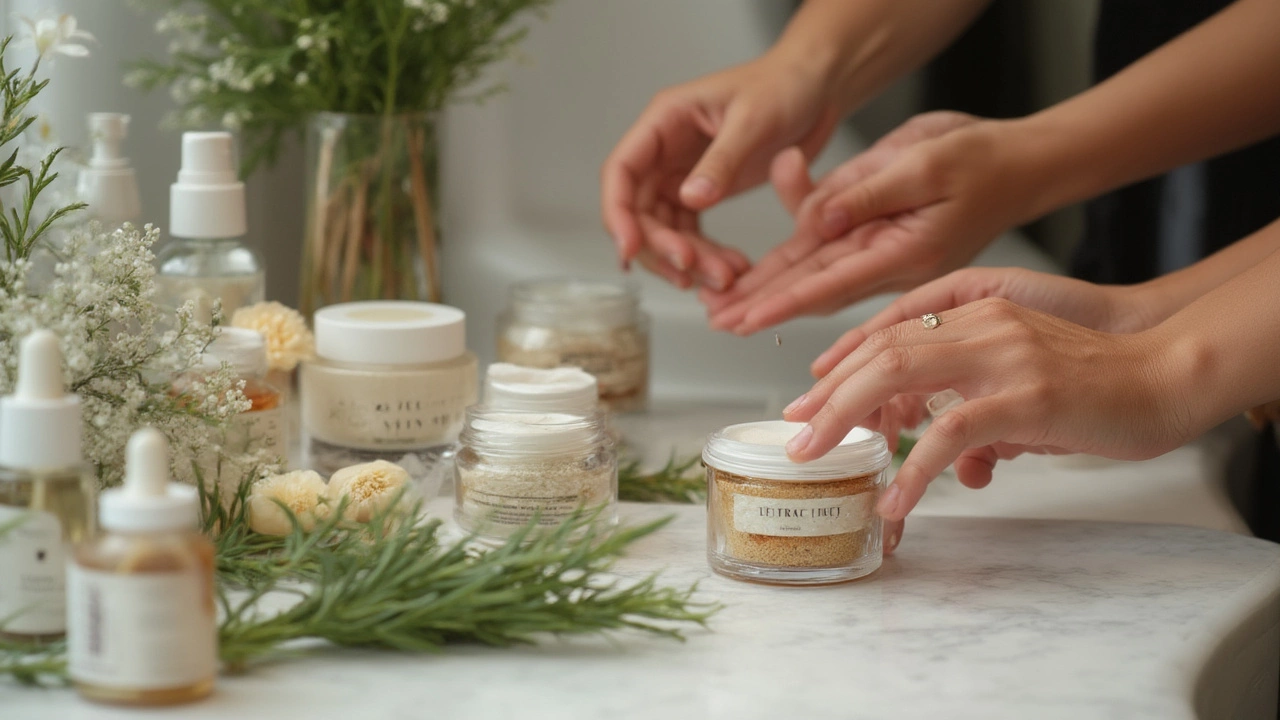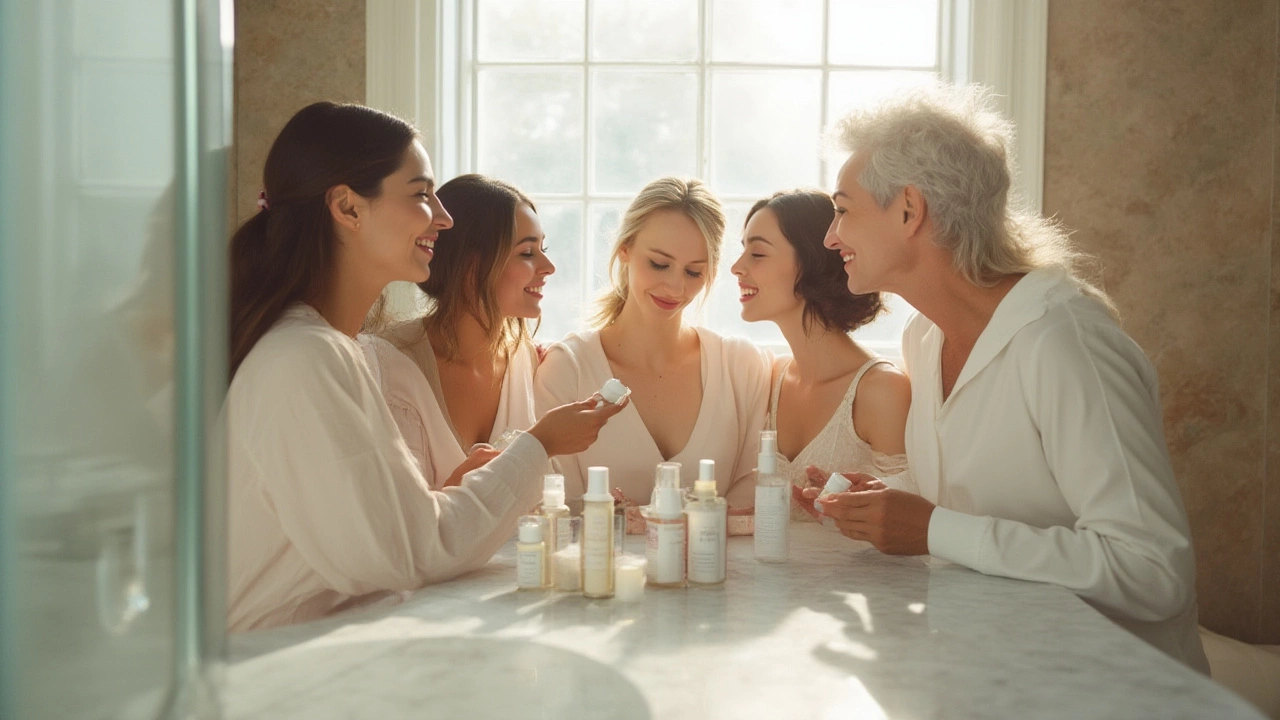Trying to pick the best skincare brand feels a bit like hunting for a unicorn. Instagram, TikTok, and glossy ads all want you to believe their potions will give you glowing skin overnight. But is there one brand that rules them all for everyone? Spoiler: The answer isn’t as simple as you’re probably hoping. Your skin, lifestyle, age, and even the weather can flip the script on what works best. Still, there are clever ways to navigate the endless sea of options and discover which brands are actually worth your money. If you’re feeling a bit lost in the skincare aisle, let’s get to the heart of what makes a brand truly stand out—and why the label on a pretty bottle might matter less than you think.
How Skincare Brands Get Their Spot on Top
Ever wonder why you keep seeing a few brand names everywhere? Some rise to the top through breakthrough science, like Estée Lauder’s Advanced Night Repair line, a classic backed by real clinical research. Others, like The Ordinary or CeraVe, explode thanks to affordable prices, no-fuss ingredient lists, and a tidal wave of social media buzz. High-end labels such as La Mer or SK-II pitch themselves as luxury, banking on rare ingredients—think sea kelp or Pitera™—wrapped in mystery and exclusivity. But hype alone isn’t enough to snag a loyal following long-term. A skin-savvy crew of dermatologists, scientists, and picky customers demand more than pretty packaging. Brands that stick around often do one thing better than the rest: they keep delivering visible results for large groups of people, even if those results aren’t always dramatic.
Let’s check out some hard numbers. According to a 2024 Statista report, CeraVe topped US dermatologist recommendations for normal to dry skin in 2023—partly because their products contain ceramides that genuinely help restore the skin barrier. Meanwhile, K-beauty brands like Laneige and Dr. Jart+ are now dominating the under-30 market in Asia and bombarding Western shelves. Clinique, founded in 1968, became a cult favorite thanks to its allergy-tested formulas that avoid many common irritants. Glossier built its empire not just on millennial pink but on a ‘skin first, makeup second’ tagline that resonated with makeup minimalists. No single path leads to the top, but reliable brands tend to leverage science, consistency, and a bit of smart storytelling.
So, is bigger always better? Not exactly. Small indie brands are actually changing the industry. Paula’s Choice, for example, grew almost entirely from genuine word-of-mouth because its transparent ingredients and no-nonsense marketing encouraged trust. Biossance has established itself as a clean beauty leader by making sugarcane-derived squalane accessible and effective. You’ll find that the most respected brands—no matter their size—listen to scientific studies, customer feedback, and shift course fast when skin tolerance changes.
| Brand | Focus/Strength | Price Range | Popular For |
|---|---|---|---|
| CeraVe | Ceramides, gentle formulas | Low | Barrier repair, hydration |
| The Ordinary | Single-ingredient actives | Low | Customizable routines |
| Estée Lauder | Anti-aging, luxury | High | Serums, overnight care |
| La Roche-Posay | French pharmacy chic | Medium | SPF, sensitive skin |
| Paula’s Choice | Transparent science | Medium | BHA exfoliants, retinol |
| La Mer | Luxury, mystique | Very High | Moisturizer, anti-aging |
| Biossance | Eco-conscious, clean | Medium | Squalane |
What Matters Most: Ingredients vs. Branding
It’s easy to fall for a celebrity or influencer recommendation. But what your skin actually needs may look nothing like what’s trending. Maybe you’ve noticed: “natural” doesn’t always mean gentle, and “chemical” isn’t automatically bad. The ingredient list often tells a better story than the brand logo. Dermatologists almost always point to key actives that work for specific skin concerns. Salicylic acid (for acne), niacinamide (for redness), and good old hyaluronic acid (for hydration) keep popping up in products that win clinical trials—and earn brand loyalty.
French brands like La Roche-Posay and Vichy sell out in pharmacies across Europe not because of fancy marketing, but because their mineral-rich spring water blends actually calm sensitive skin and offer solid UV protection. Meanwhile, The Ordinary became a global hit by offering single-ingredient solutions—like their 10% Niacinamide serum, which consistently gets high marks for helping with oil control and dullness. If you peek at what dermatologists stock at home, you’ll often find brands like Vanicream or Eucerin, not because they’re photogenic, but because they’re about simple, reliable formulas for stressed-out skin.
But branding still makes an impact. Luxury names like La Mer bake a sense of self-care and sophistication into every jar. Even if their famous 'Miracle Broth' isn’t magic, thousands of fans swear by its texture and scent. SK-II’s Pitera™ essence gained a quiet cult status thanks to rave reviews in Japan, and now it’s a staple in Hollywood. That said, good branding can’t fix a formula that irritates or simply does nothing for your skin. The balance? Look for science-backed actives as the main highlight, then see if a brand’s values (sustainable, cruelty-free, inclusive) really match your personal style.
- Tip: If the ingredient list reads like a tongue-twister or is loaded with perfume, approach with caution—especially if you’ve had issues with sensitivity or allergies before.
- Tip: Check for brands with published research or clinical studies to back up their claims. (CeraVe and La Roche-Posay excel at this.)
- Tip: Don’t be swayed by “all-in-one” miracle claims—the best brands usually pick one or two things to specialize in and do them really well.

Matching Brands to Skin Type: No One-Size-Fits-All
Now for the tricky part: Like jeans, not every skincare brand fits everyone the same way. Dry, sensitive, oily, mature, acne-prone—each skin type throws a curveball into the search for the best. Studies by the American Academy of Dermatology stress that strong actives (retinol, vitamin C) can work wonders or make things worse, depending on your skin’s tolerance. For dry or eczema-prone types, brands like CeraVe and Avène (with mineral-rich spring water) can truly be game-changers. On the other hand, oily and acne-prone folks rave about Paula’s Choice (their 2% BHA Liquid Exfoliant is a cult classic) and certain Korean labels, which focus on lightweight layers and soothing ingredients like centella asiatica.
Let’s break it down a bit more. Sensitive skin usually benefits from fragrance-free, minimal-ingredient lines—think Vanicream, Eucerin, or Bioderma. If you’re looking for anti-aging, brand matters less than sticking faithfully to actives like retinol (RoC and Neutrogena are affordable in this arena) or peptides (try Olay Regenerist). For hyperpigmentation, look for brands offering stable vitamin C or niacinamide, like SkinCeuticals or The Ordinary. Layering on several different brands is absolutely normal. Ask anyone who's had a full skin analysis—few use only one brand.
- Dry or sensitive skin: Focus on ceramides (CeraVe, Aveeno), urea (Eucerin), or thermal spring waters (La Roche-Posay, Avène).
- Oily or acne-prone: Salicylic acid (Paula’s Choice, Neutrogena), tea tree (The Body Shop), or low-irritant K-beauty (COSRX, Dr. Jart+).
- Combination: Mix-and-match by area—hydrating cream for cheeks, light gel for T-zone; look at brands with customizable options like The Ordinary.
- Mature skin: Retinol (Olay, RoC), peptides (Olay Regenerist), and antioxidant-rich brands (Estée Lauder, SkinCeuticals).
Shopping for the right brand can feel overwhelming, so patch-test new products or visit a store that offers samples. A 2023 Harvard study confirmed that mixing actives from trusted brands, rather than blind loyalty to a single label, gives better results over time. Personalized choices almost always beat slick marketing or friends’ recommendations. What surprises many is how affordable options (like drugstore mainstays) frequently deliver results as good as, and often better than, luxury versions—especially if your main goal is keeping your skin healthy day-to-day.
Pro Tips: How to Spot a Brand That Delivers
All right, if there’s no single champion, how do you avoid a pricey mistake and find the perfect skin routine partner? Look for brands that tick off a few tried-and-true boxes: Safety (minimal allergens or irritants); efficacy (published clinical results); broad accessibility (different formulas for different skin types); price transparency (no miracles promised, no bank-breakers required). Dig into the details—when was the brand founded? Has it weathered years of real-world reviews? Does the brand listen and respond to feedback (think reformulations or added fragrance-free lines)?
Don’t forget about ethical practices, either. Cruelty-free brands are a priority for many, and this no longer limits your choices. Good examples include Paula’s Choice, Youth To The People, and Bliss, all verified by Leaping Bunny or PETA. Eco-friendly packaging, refill options, and clear ingredient sourcing are signs you’re looking at a modern, responsible label. Sometimes, indie brands excel here—Herbivore Botanicals, for example, trades in sustainable glass packaging and simple, plant-based ingredients. Transparency is the real magic.
- Check for a “dermatologist tested” stamp, but know that it means more when backed by large, peer-reviewed studies.
- See if other products in the brand’s line address specific needs you have. Customization equals flexibility and higher satisfaction long-term.
- Join online forums or reddit threads like SkincareAddiction—there’s a wealth of honest reviews from people who’ve actually dealt with your concerns.
- If you have a tight budget, look at the per-use cost instead of just sticker price. Brands like The Ordinary and CeraVe offer concentrated formulas that last.
If you really want to dig into the numbers, look for brands with the fewest consumer complaints on sites like Trustpilot, the highest rankings on sites like Beautypedia, and consistently positive before-and-after photos on verified accounts. This footwork beats trusting a single viral TikTok before-and-after or a five-star Amazon review from someone who may not have the same skin as you. If there’s one truth about finding the best skincare brand, it’s this: Your perfect match will almost always involve a blend of evidence, a touch of personal taste, and a willingness to ditch what doesn’t deliver after a fair test run.

